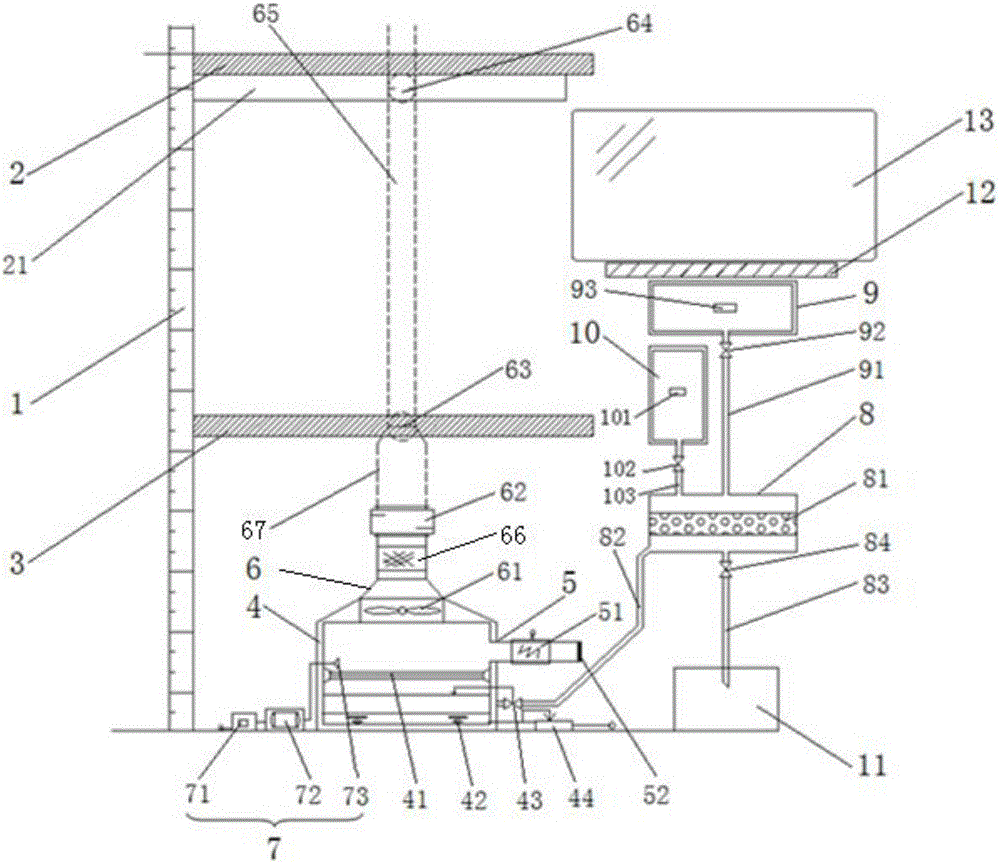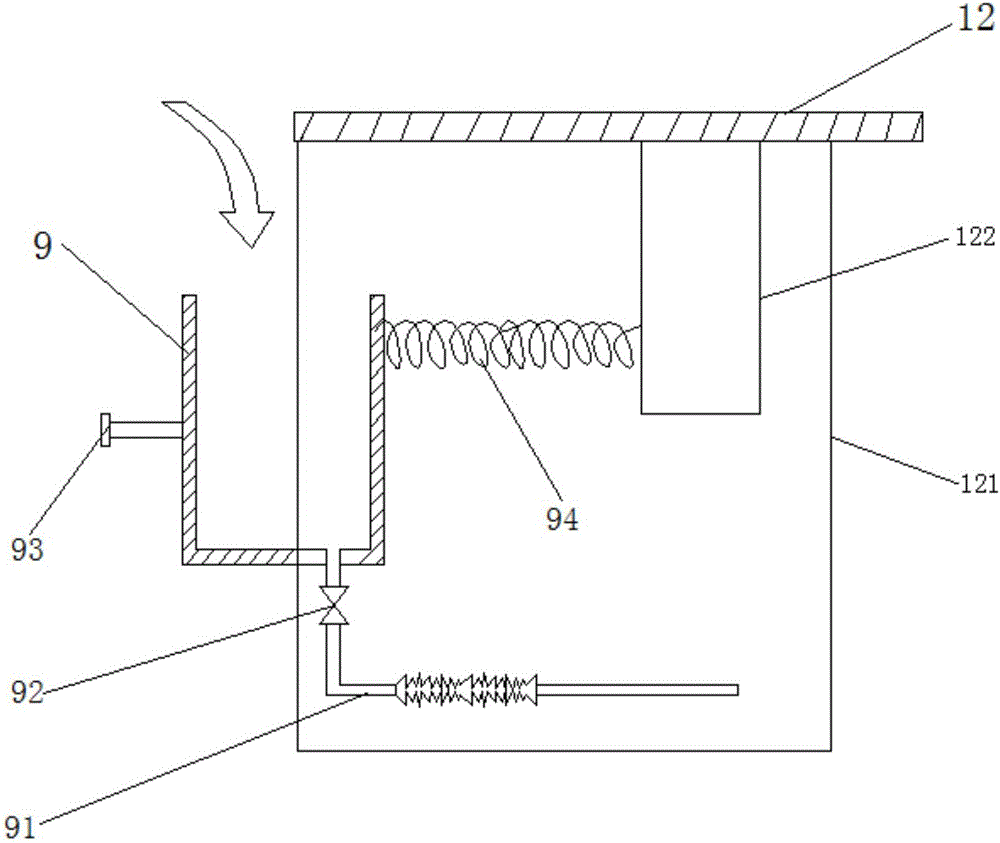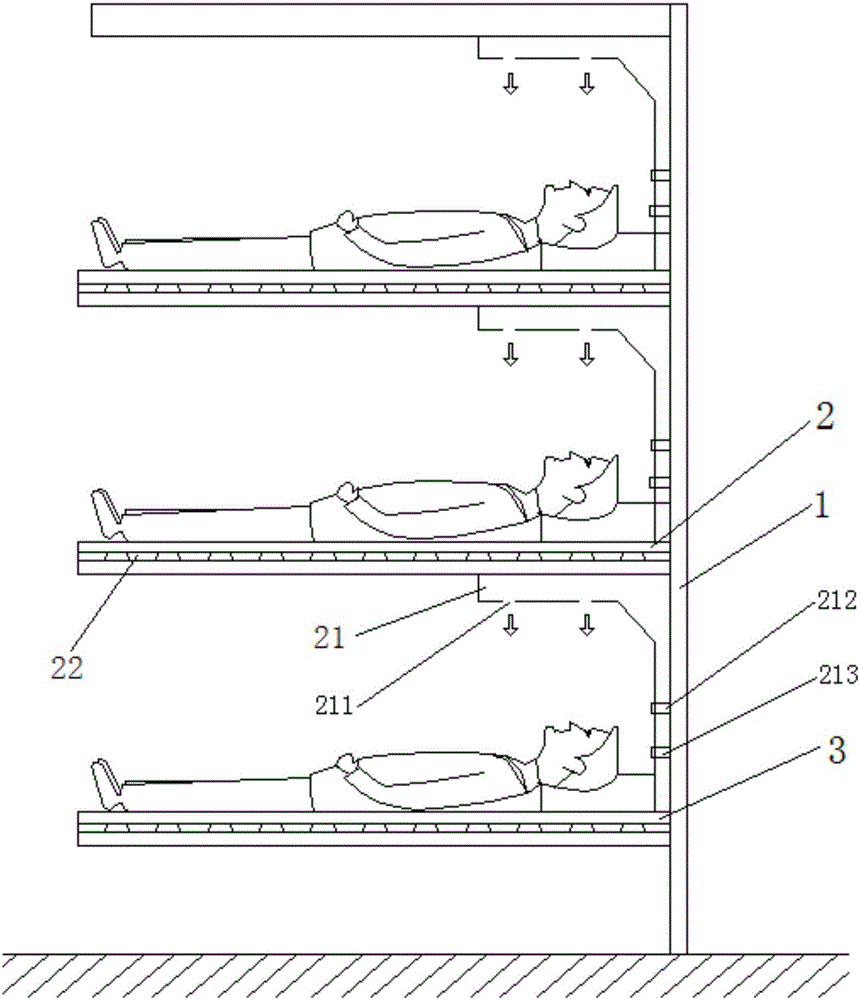Train sleeping berth bed head humidifying method and device
A humidification device, sleeper technology, applied in sleeper appliances, railway vehicle heating/cooling, transportation and packaging, etc., can solve the problems affecting passengers' rest quality, passengers' discomfort, crowding, etc., so as to improve rest quality and reduce power consumption. Effect
- Summary
- Abstract
- Description
- Claims
- Application Information
AI Technical Summary
Problems solved by technology
Method used
Image
Examples
Embodiment 1
[0048] combine Figure 1-6 , the train sleeper bedside humidifying device of the present invention comprises a humidifying component 4, a hot air conveying component 5, an air leading component 6, an anion generating component 7, a water treatment component 8, a water adding component 9, an activation liquid filling component 10 and waste liquid recovery Components 11, from top to bottom along the height direction of the bunk partition board 1, are the first sleeper bed 2 and the second sleeper bed 3, the humidifying component 4, the hot air transmission component 5 and the air The deriving component 6, the humidifying component 7 generates water mist, the hot air transmission component 5 transmits the hot air into the humidifying component 4 to absorb the water mist, and then the air deriving component 6 connected with the humidifying component 4 will absorb the water mist The hot air is distributed along the bed bottom of the high-rise sleeper to the head of the low-rise sle...
Embodiment 2
[0061] The sleeping berth is 1.8m long, 0.6m wide, and 0.75m high. The air temperature in the compartment is 18°C, and the relative air humidity is 30%.
[0062] 1. The size and spacing of the distribution holes on the distribution board, the wind speed and temperature of the air outlet
[0063] Consult the reference book "Thermal Environment in the Car and Human Thermal Comfort" (edited by Li Baizhan, Zheng Jie, etc.) and literature (ANSI / ASHRAE Standard 55-1992. Thermal environmental conditions for human occupancy. Atlanta: American Society of Heating Refrigerating and Air-Conditioning Engineers, 1992 ) and (Kaczmarczyk J, Melikov A, Fanger PO. Human response to personalized ventilation and mixing ventilation. IndoorAir, 2004, 14 (8): 17-29) conclusions:
[0064] The suitable air temperature for blowing to the human head is: 23-25°C.
[0065] The suitable relative humidity of the air blowing to the head of the human body is: 40% to 70%.
[0066] The suitable air velocity f...
PUM
 Login to View More
Login to View More Abstract
Description
Claims
Application Information
 Login to View More
Login to View More - R&D Engineer
- R&D Manager
- IP Professional
- Industry Leading Data Capabilities
- Powerful AI technology
- Patent DNA Extraction
Browse by: Latest US Patents, China's latest patents, Technical Efficacy Thesaurus, Application Domain, Technology Topic, Popular Technical Reports.
© 2024 PatSnap. All rights reserved.Legal|Privacy policy|Modern Slavery Act Transparency Statement|Sitemap|About US| Contact US: help@patsnap.com










